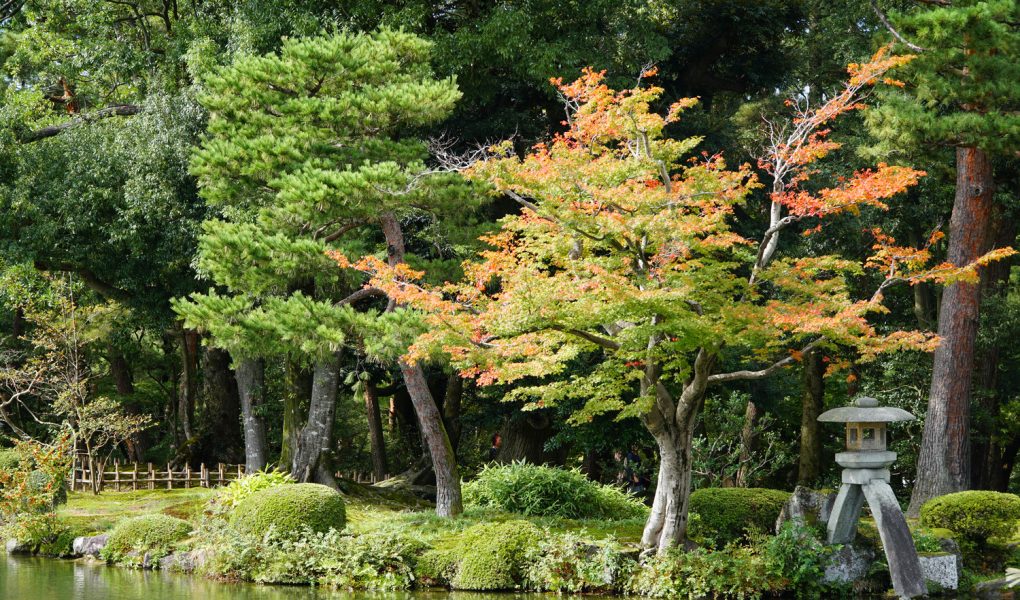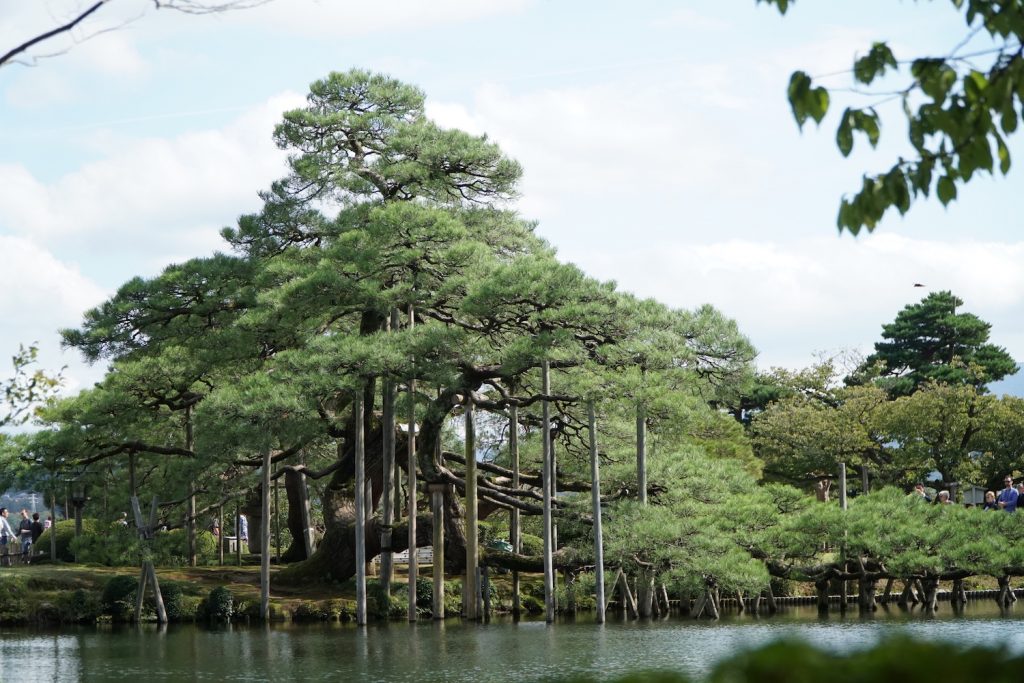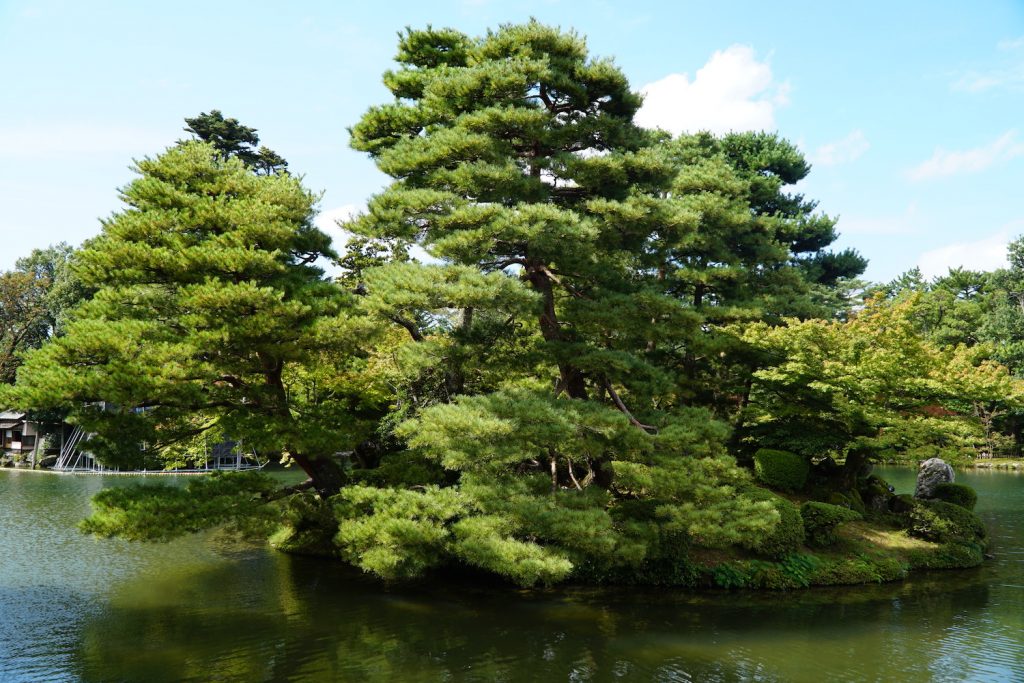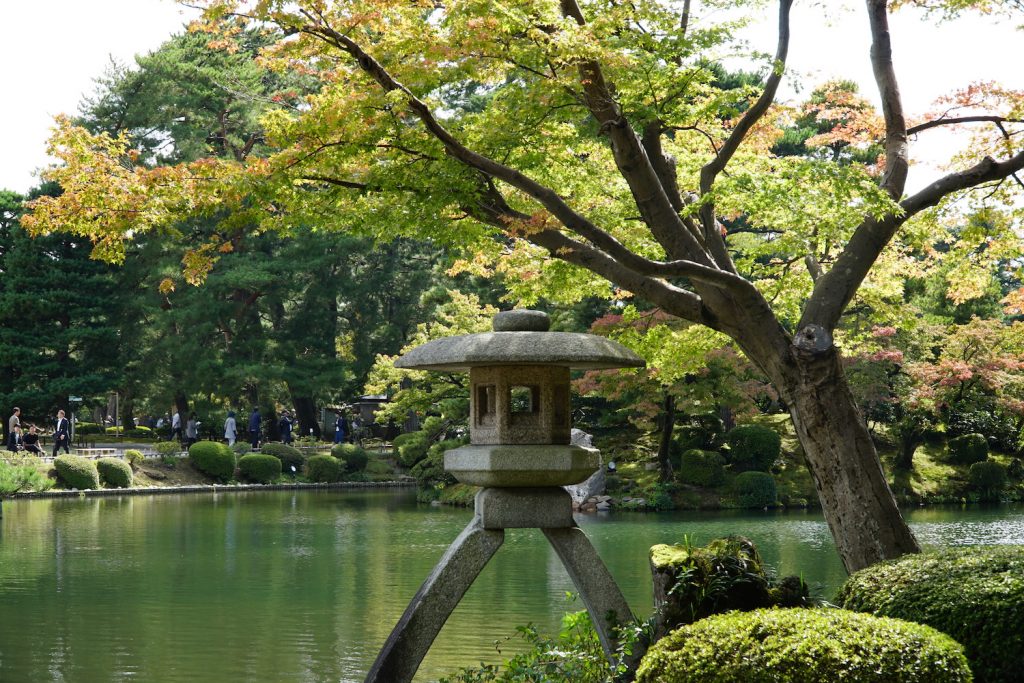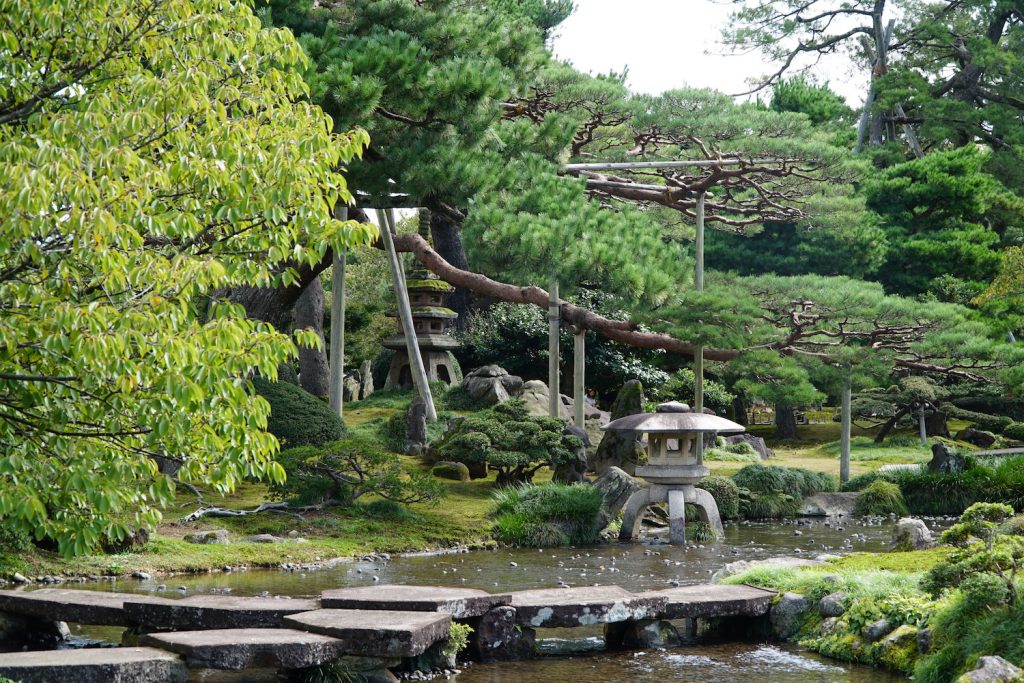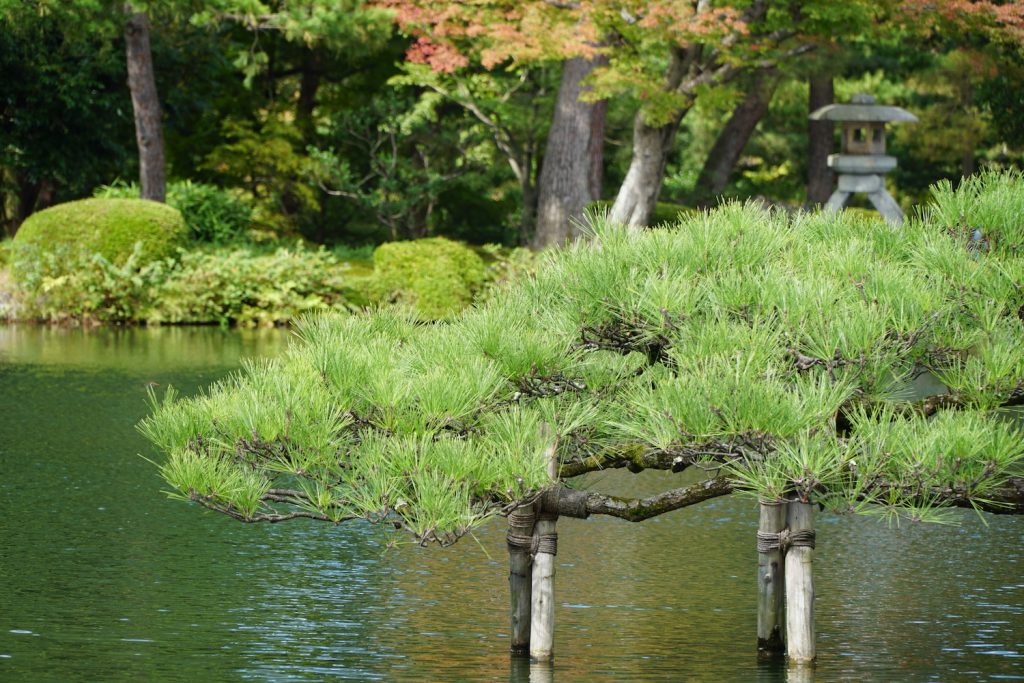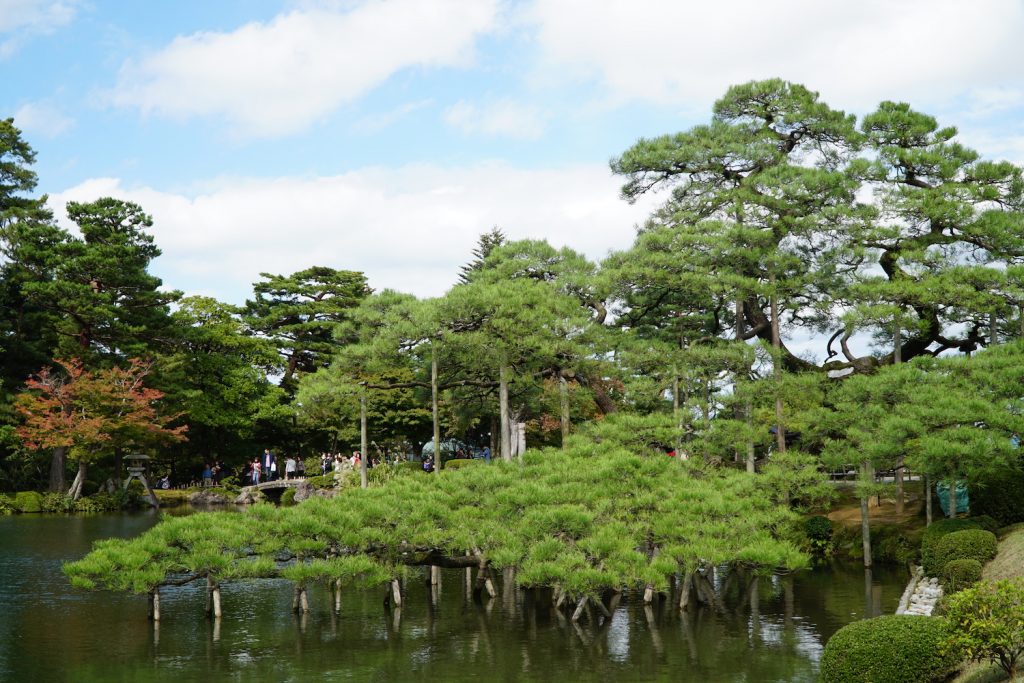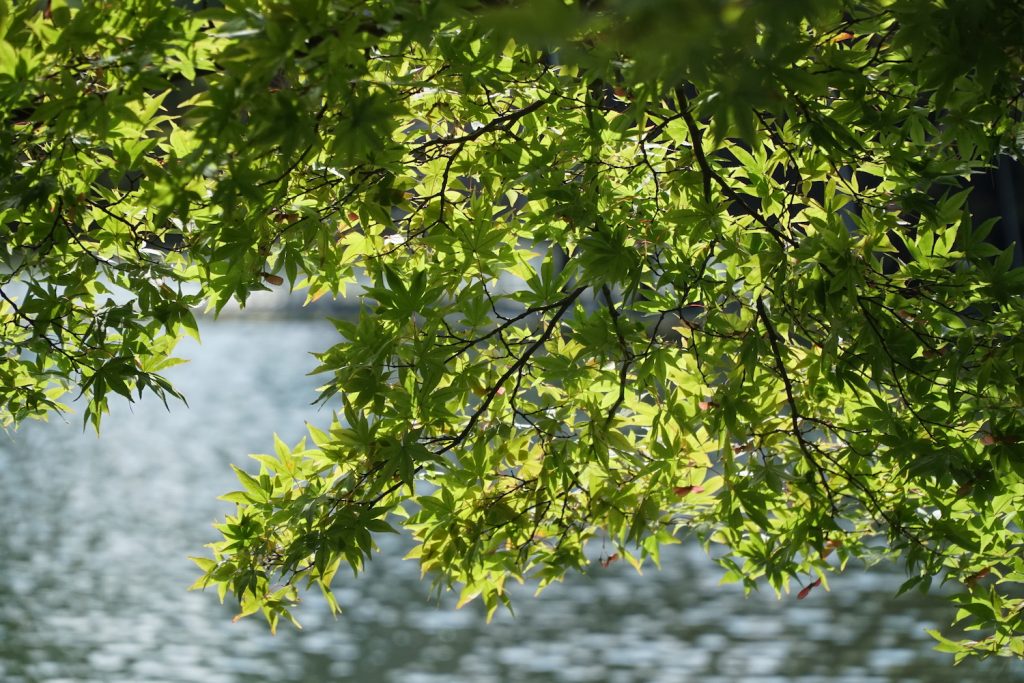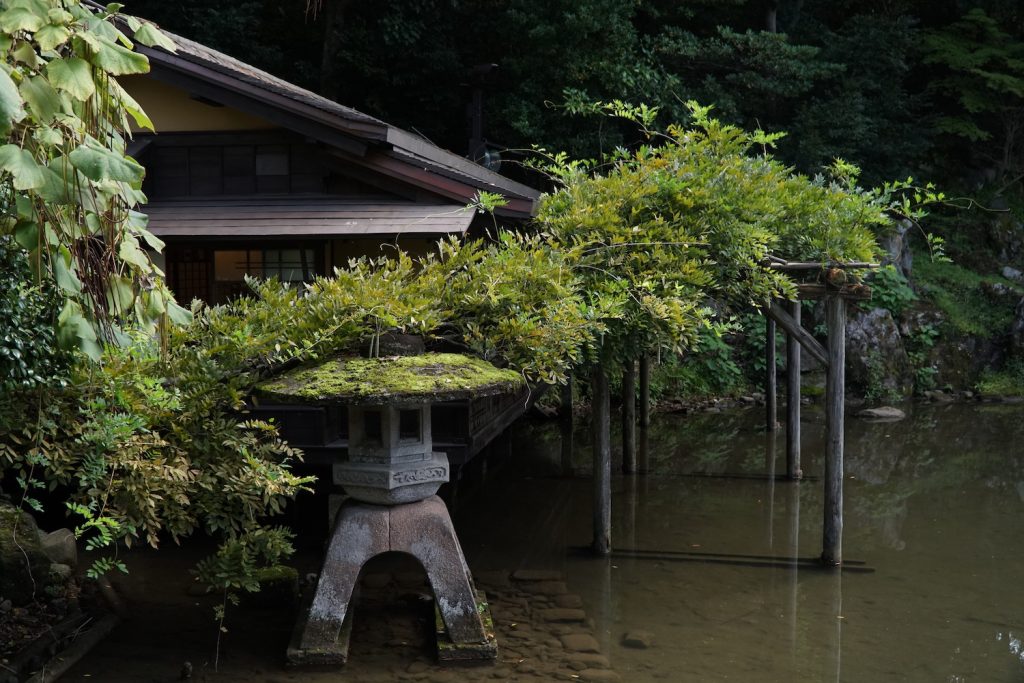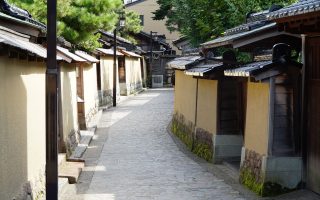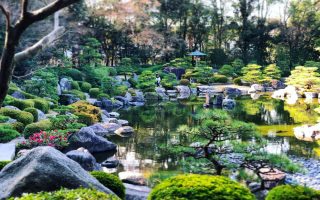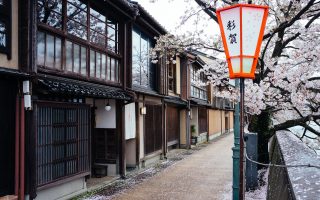Kenroku-en (兼六園) is a beautiful Japanese Garden located in the city of Kanazawa in Ishikawa Prefecture. It is considered one of Japans most beautiful gardens and it is part of the “Three Great Gardens of Japan”. Kenroku-en is known for being beautiful through all seasons, hence it’s open year-round. The gardens most famous sight might be the Kotojitoro lantern, which is located on the edge of the gardens main pond.
Kanazawa half-day tour (incl. Kenroku-en)
Kenroku-en garden features two major ponds; Kasumiga-ike pond and Hisago-ike pond. Between the two is a smaller pond in which a fountain spouts water several meters up in the air. This unassuming fountain turns out to be Japans oldest non-pumped fountain and quite an interesting one. The water comes from Kasumiga-ike pond, and is forced into the air by the pressure that results from the height difference between the two ponds.
The garden features a stunning amount of sights and attractions, including the famous two-legged Kotojitoro Lantern by Kasumiga-ike pond, a turtle shaped island in Kasumiga-ike pond, the ancient Karasaki Pine Tree which was planted from seed by lord Nariyasu in the 1800’s and is so large that it requires support, a view point overlooking the city, three teahouses, Cherry blossom gardens and a plum-grove garden, the beautiful Hanami-bashi (flower-viewing bridge) from which there is a stunning view of cherry blossoms, iris and azalea depending on the season and the Yamazaki-yama Hill which is covered in trees which display the most beautiful red and yellow leaves during autumn season.
There are plenty more things to see and experience in Kenroku-en, which surely deserves several hours for a detailed exploration.
All photos above © touristinajapan.com
The Six Features Garden
Six Features Garden is the translation of the name “Kenroku-en”. The name, which was given by lord Matsudaira Sadanobu in the late 1700’s, is a reference to a classic Chinese book “Chronicles of the Famous Luoyang Gardens“. The book describes how gardens can carry six different attributes or features: Spaciousness, Seclusion, Artifice, Antiquity, Water-courses and Panoramas. According to the text it is impossible to combine them all, as spaciousness and seclusion counter each other, antiquity doesn’t work well with artificial elements and water ways make it hard to achieve wide and distant views. Yet, Matsudaira Sadanobu must have thought that the garden did indeed combine all six features, as he decided to name the garden so.
It is interesting to search for these three contrasting attributes while exploring the beautiful gardens. One easily finds many secluded areas, but the park also doesn’t lack wide open space. Kenroku-en is full of antiquities and authentic nature, but at the same time the garden is a carefully constructed (artificial if you will) piece of nature. The waterways are everywhere in the park, yet there is at least one wide view of the surrounding area.
All photos above © touristinajapan.com
History of Kenroku-en Garden
The history of the Kenroku-en is long and complicated, and it’s beginning not completely understood. There are different stories about who founded it, when and why. The garden was called Renchi-tei (lotus pond) at least from 1676 until it burned down in 1759.
Kenroku-en, as the garden has been called since the late 1700’s, is a typical garden of a Daimyo (feudal lord). It is located next to, but outside of the Kanazawa Castle area and has been considered the outer garden of the castle. The garden has been formed, extended, changed and rebuilt over a long period from the early 1600’s to the mid 1800’s by leading members of the Maeda family who controlled the Kaga domain (present day Kanazawa). The garden seen today is the result of many feudal lords adding their own touch.
In 1774 Kenroku-en was restored after a tragic fire that happened a few years earlier. In this connection the 11th Daimyo Harunaga added the waterfall and the Yugao-tei tea house. Later, in 1822, the 12th Daimyo Narinaga added the winding waterways using water from the man-made Tatsumi canal. The succeeding Daimyo Nariyasu added more water features and extended the main pond. In 1874, few years after the Meiji restoration, Kenroku-en was opened to the public.
In 1985 the garden was ranked as a “Special Place of Scenic Beauty” by the government, the highest achievable ranking of a cultural and natural site. As late as 2000 the two tea houses “Funano-ochin” and Shigure-tei” were reconstructed, after having been torn down in the late 1800’s.
All photos above © touristinajapan.com
Planning your visit
| Hours | 7:00 – 18:00 (March 1st – October 15th) 8:00 – 17:00 (October 16 – February 28) |
| Entrance fee | ¥310 adults, ¥100 children, Seniors free |
| Website | Official Garden Website |
| Hotels | Kinjohro, UAN kanazawa, The Share Hotel Kumu and more hotels |
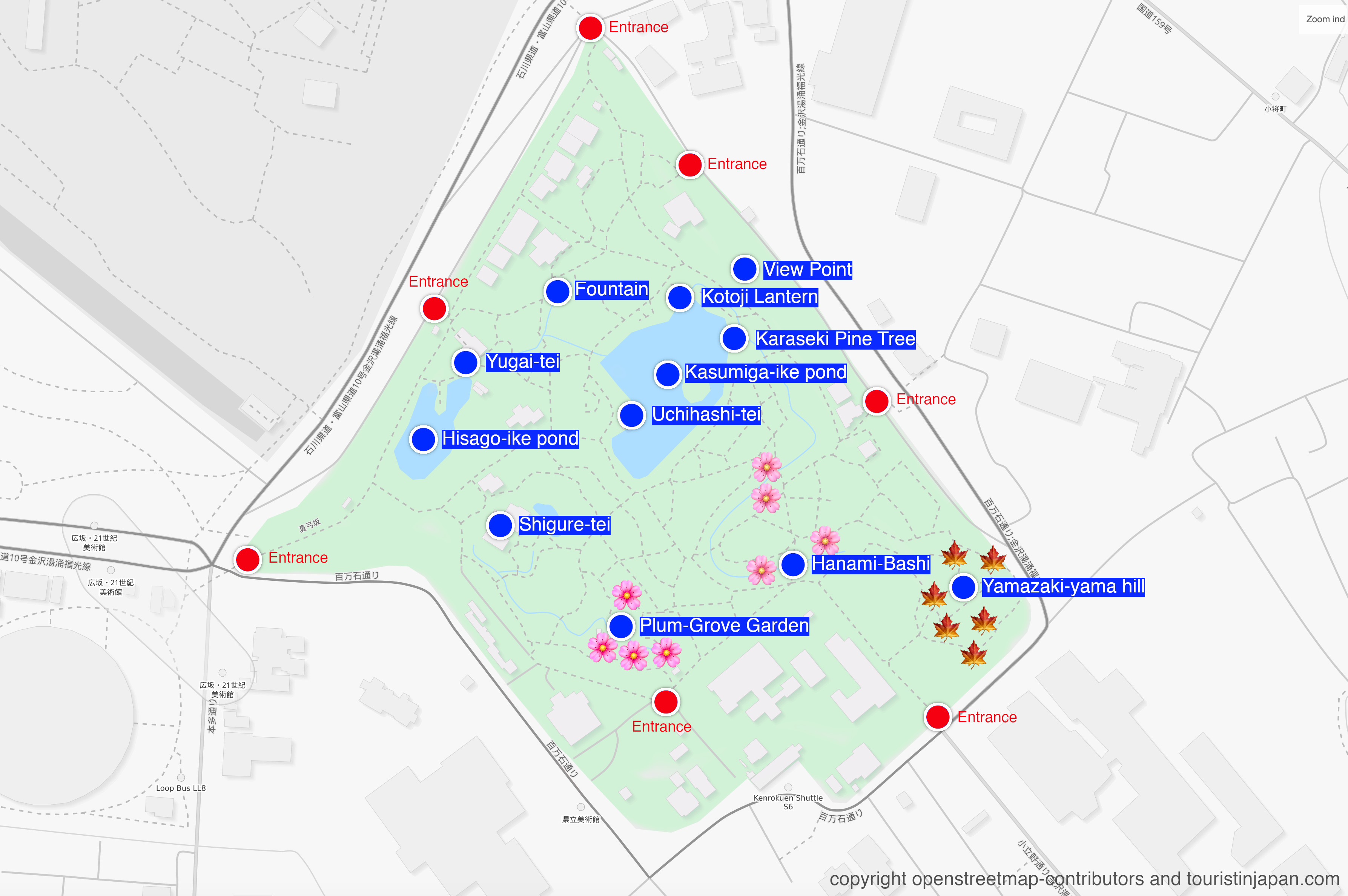
Getting there
Loop bus: the loop bus which runs around Kanazawa stops at Kenroku-en garden. Both the right loop and left loop can be taken. The stops are respectively RL8 and LL9. One-way fare: ¥200. A day pass costs ¥500.
Official Bus website: hokutetsu.co.jp
Shuttle bus: a dedicated shuttle bus departs from Kanazawa Station to Kenroku-en. Get off at stop S8. One-way fare: ¥200 on weekdays, ¥100 on weekends and holidays.
Official Bus website: hokutetsu.co.jp
JR Bus: if you have JR Pass, then you can take advantage of the JR Bus which runs through Kanazawa. It is free for holders of the Japan Rail Pass. The Korinbo Line which departs from Kanazawa Station stops at Kenroku-en garden. Get off at stop 6 when departing from Kanazawa Station.
Nishinihon JR Bus website: nishinihonjrbus.co.jp

